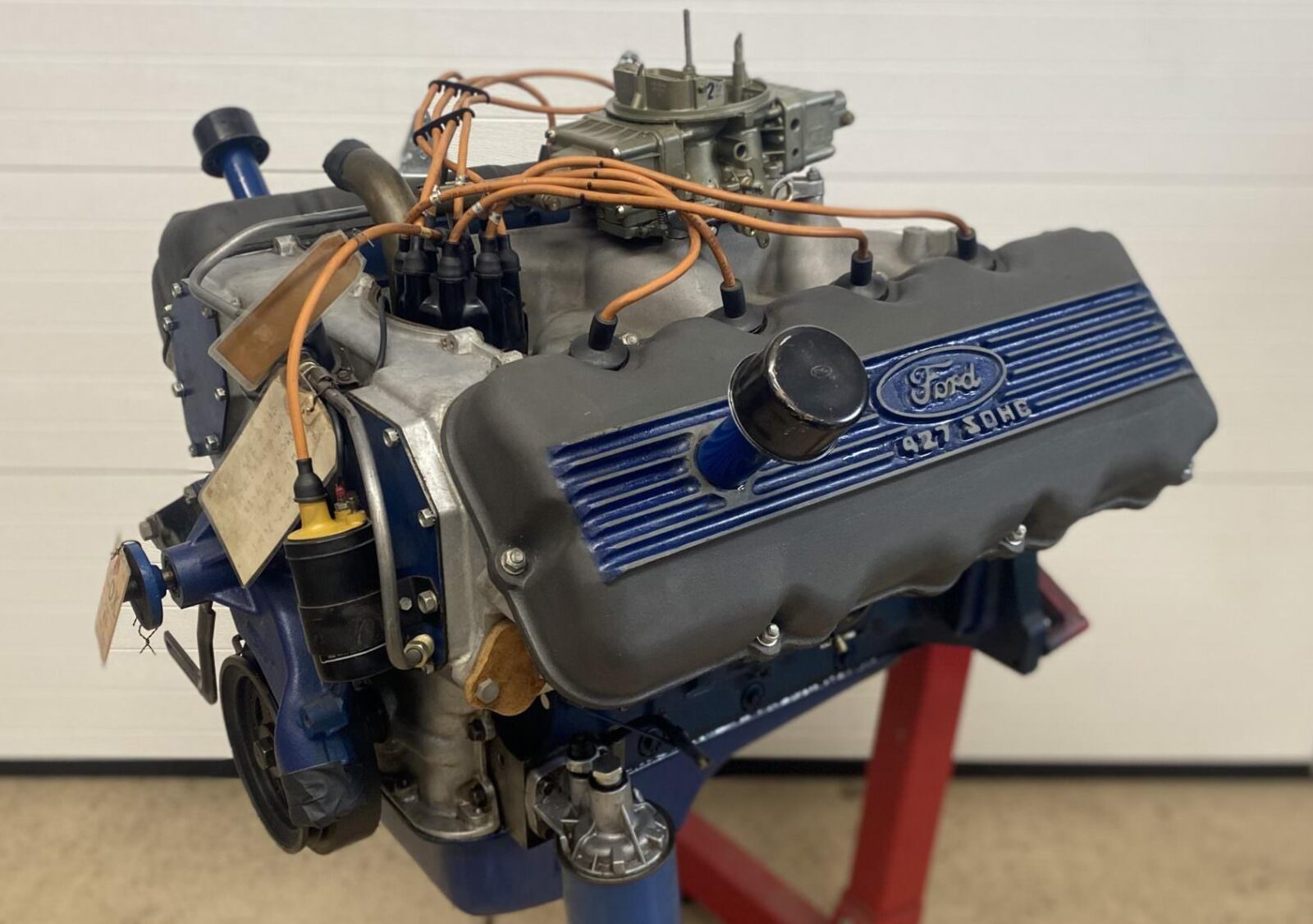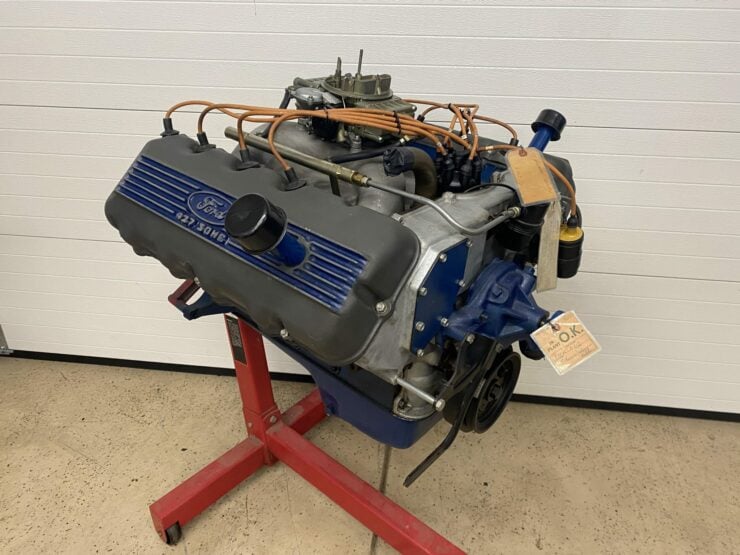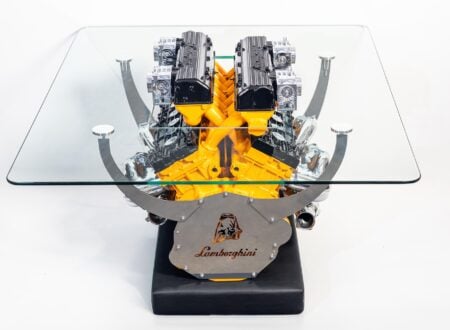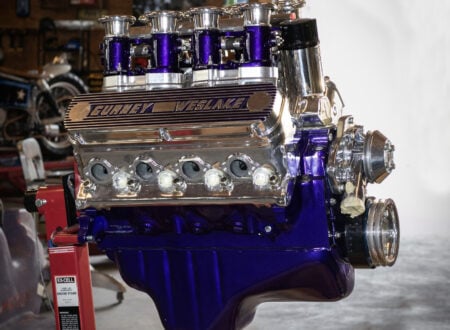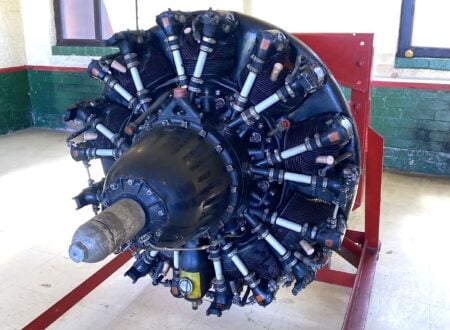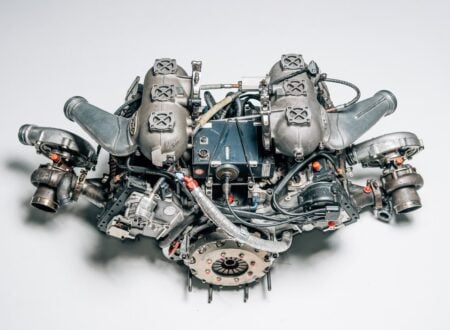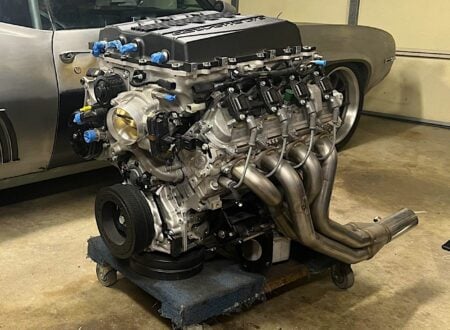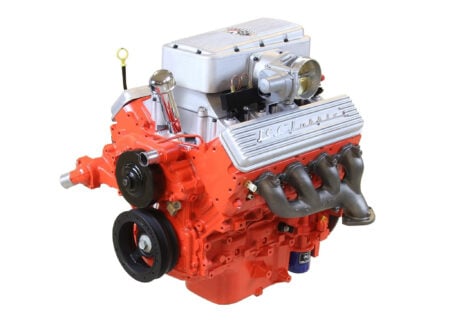The Ford 427 SOHC Cammer V8 is one of the rarest and most desirable big block V8 engines ever made. Unusually for an American V8 it has overhead cams rather than pushrods as it was built specifically for racing.
It’s been called the “90 Day Wonder” thanks to its compressed development schedule, some have gone so far as to call it “Ford’s Greatest Engine” however there’ll be plenty of people who argue that statement, and point to the highly influential Flathead V8 released in 1932 and engines like the more recent Coyote V8.
A Hemi Dilemma
In the mid-1960s Ford was faced with a dilemma, a dilemma in the shape of Chrysler’s 426 Hemi V8 which was an exceptionally capable engine no matter your brand loyalties. In order to effectively race against the 426 Hemi and win Ford needed a new engine, and it needed to be a doozy.
Rather than stick with the tried and tested pushrod V8 architecture so beloved of American automakers Ford decided to develop an engine with single overhead cams per bank allowing higher RPM operation, and hopefully more power.
The Development Of The Ford Cammer 427 V8
Ford engineers had developed the Cammer on the 427 FE V8 platform. The FE is a pushrod engine of course so it needed new heads, a timing chain set up, and they designed an idler gear shaft in the traditional cam location in the block that operated the distributor and oil pump.
The FE block was modified with cross-bolted main bearing caps and a revised oiling system to better suit overhead cam and roller rocker operation. Originally the Cammer had an iron block and iron heads, though later engines were fitted with alloy heads to help reduce the engine’s prodigious weight.
Above Video: This episode of Unity MotorSports Garage covers the history of the Cammer, including a range of interesting historic images and video footage.
Though the engine had its issues it likely would have proven competitive in NASCAR thanks to its high-RPM capability that was well-suited to the high speed banked circuits typically used in the racing series.
On its release the Ford 427 SOHC Cammer V8 was rated at 616 bhp at 7,000 rpm and 515 lb ft of torque at 3,800 rpm – excellent figures by the standards of the mid-1960s.
The Cammer’s Achilles’ Heel
They say every engine has an Achilles’ heel, some element of the design that wasn’t particularly well engineered. Some engines seem to be made up almost entirely of them as a matter of fact.
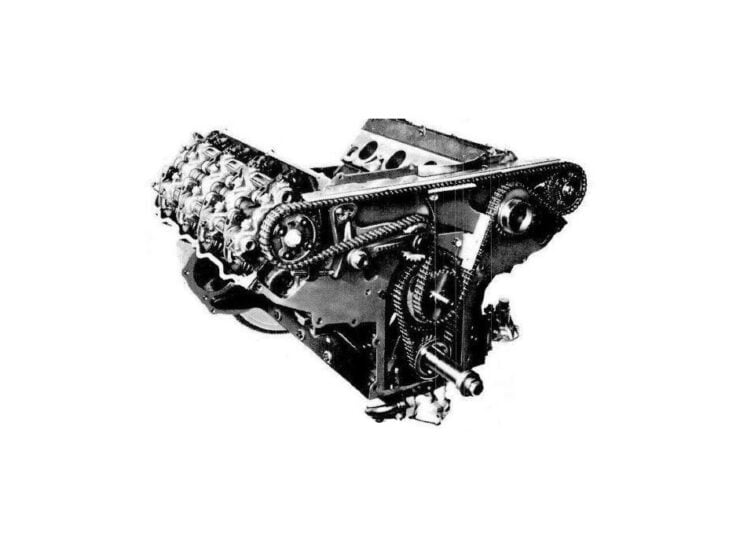

The Achilles’ heel of the Ford Cammer engine was its timing chain – at almost 7 feet long it’s one of the longest timing chains ever used in an automotive application, and as any mechanic will tell you, timing chains take on the characteristics of bungee cords given enough time and use.
The timing chain issues were a result of the compressed development timeline, they necessitated different valve timing for the left and right banks to account for chain stretching, and the camshafts themselves needed to a be a mirror image of one another in order to function.
Sadly the Cammer would never get to turn a wheel in NASCAR as the rules were changed to ban special racing engines, the series was supposed to be for stock cars not prototype specials.
The ban affected the Ford Cammer and the Chrysler 426 Hemi, Chrysler sat out the 1965 racing season in protest and Ford made do with their earlier 427 V8 “Wedge.”
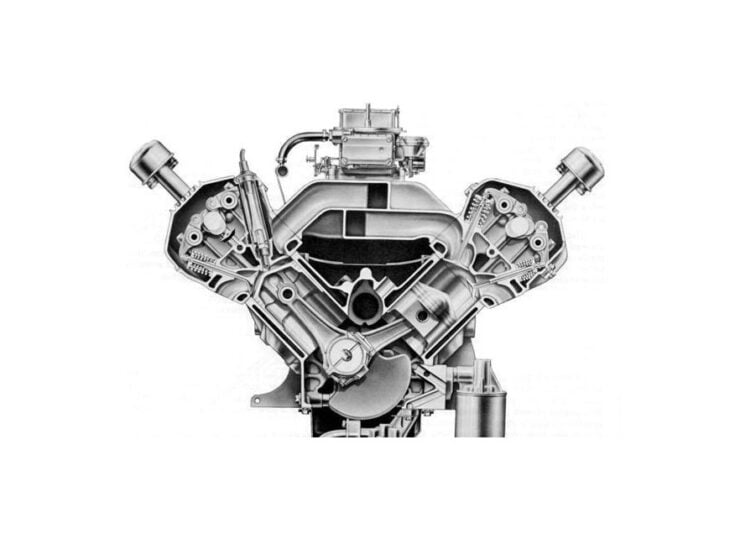

The Cammer Goes Drag Racing
Rather than dump the Cammer project Ford continued to develop the engine in the hopes of changing the minds of those making decisions at NASCAR, in the meantime they sent the engine off into the world of drag racing – where it proved wildly successful.
Many of the big names in 1960s drag racing were putting the Cammer to good use, including Bill Lawton who won the AHRA and NHRA Winternationals in 1966. Other Cammer pilots included Mickey Thompson, Gerry Schwartz, Tommy Grove, Tom Hoover, Pete Robinson, Connie Kallita, and many others.
1967 would see Connie Kalitta’s Cammer-powered “Bounty Hunter” slingshot dragster win the Top Fuel events at the AHRA, NHRA, and NASCAR winter meets – becoming the only “triple crown” winner in the history of American drag racing.
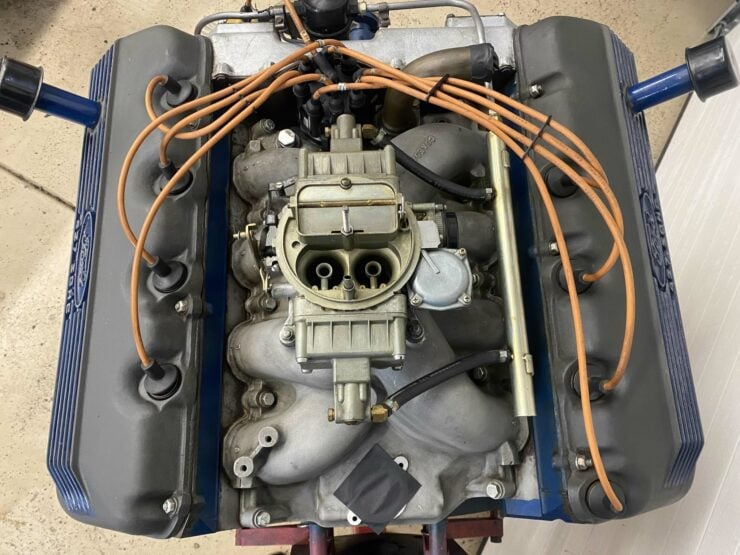

These successes should be no great surprise, as many drag racing outfits were getting over 2,500 hp out of their supercharged Cammers.
Many years later a 1969 Ford Mustang Mach 1 would be fitted with a Cammer V8, it was nicknamed “The Sin City Shaker” and it became one of the most collectible custom Mustangs ever made.
The 1966 Ford Cammer V8 Shown Here
The engine you see here is an unused original Cammer crate engine from 1966, it was delivered new to racing car manufacturer Holman-Moody but it remained unused and in remarkably original “zero hours” condition.
This is one of the earlier examples of the engine with iron heads, it also has magnesium valve covers, a high-rise aluminum alloy intake manifold, a Holley four-barrel carburetor, and a dual-point Autolite distributor and ignition components.
It’s now being offered for sale on Bring a Trailer out of Greenwood, Indiana and you can visit the listing here if you’d like to read more about it or register to bid.
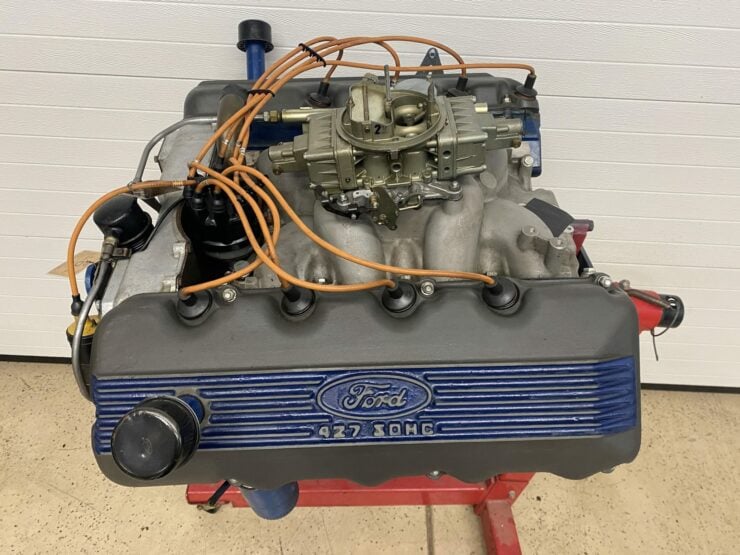
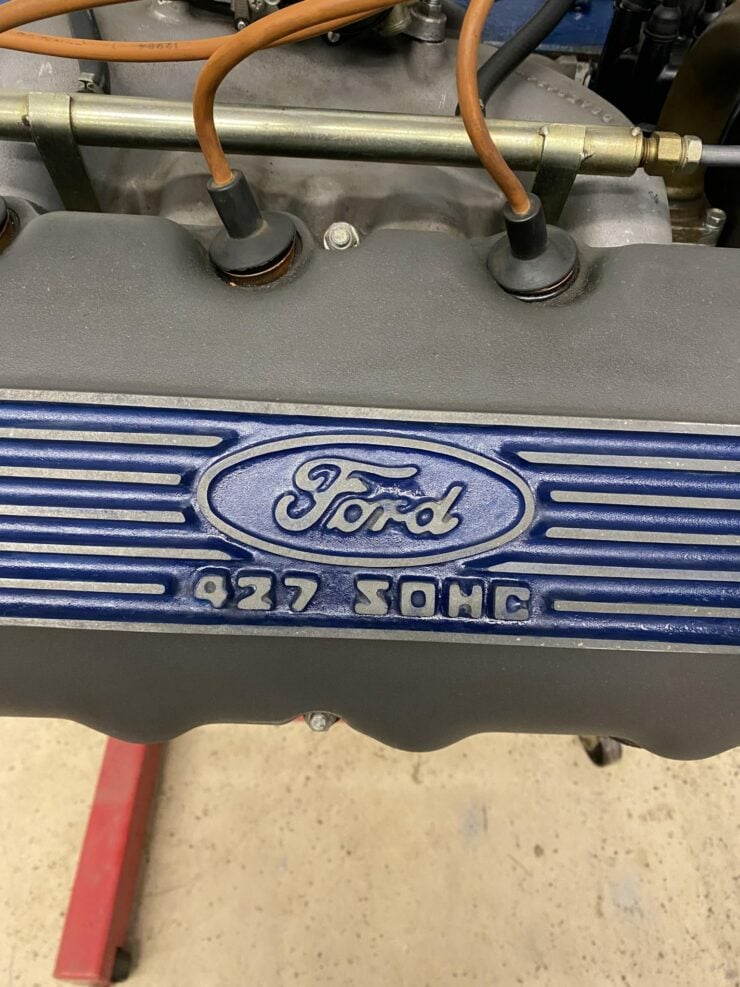
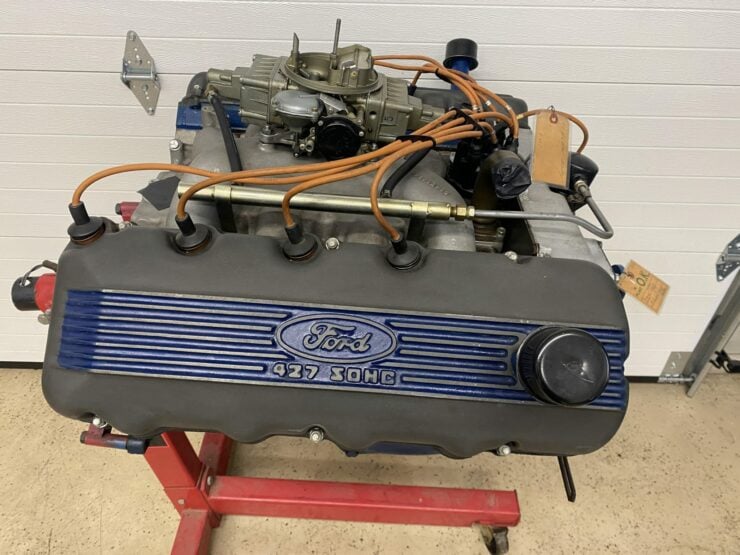
Images courtesy of Bring a Trailer and Ford.

